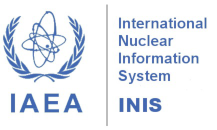Enviar Submissão
Commitments
Navegar
Brazilian Journal of Radiation Sciences - ISSN 2319-0612
Periódico científico mantido pela ![]() Sociedade Brasileira de Proteção Radiológica (SBPR), uma sociedade científica membro da Associação Brasileira de Editores Científicos (ABEC)
Sociedade Brasileira de Proteção Radiológica (SBPR), uma sociedade científica membro da Associação Brasileira de Editores Científicos (ABEC)
SBPR é uma sociedade científica (associação civil) sem fins lucrativos, associada à International Radiation Protection Association, a voz dos profissionais de proteção radiológica, e à FRALC, a Federação Latinoamericana e do Caribe de Sociedades de Proteção Radiológica.

All journal content is licensed under a Creative Commons Attribution 4.0 International License.





















